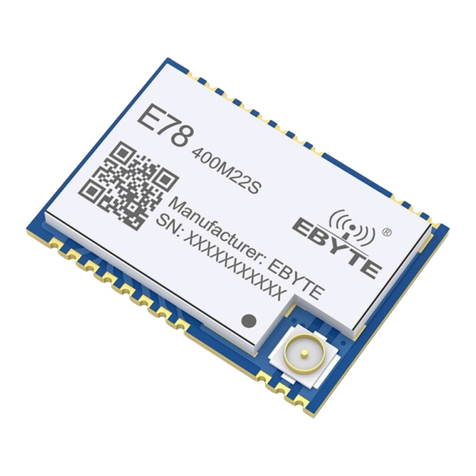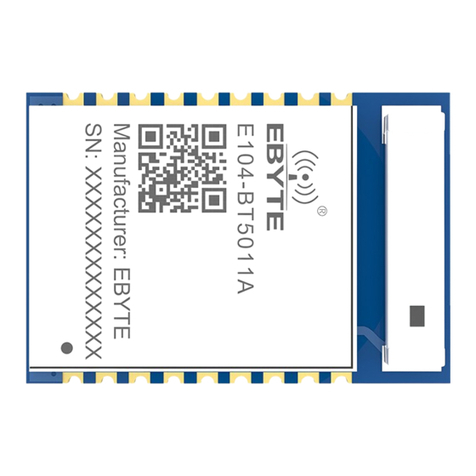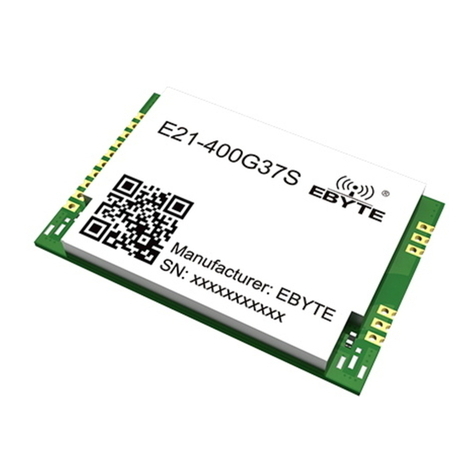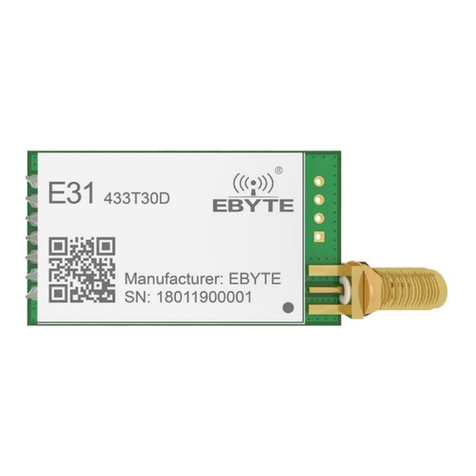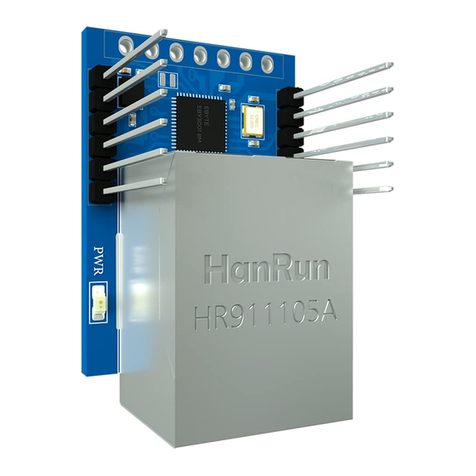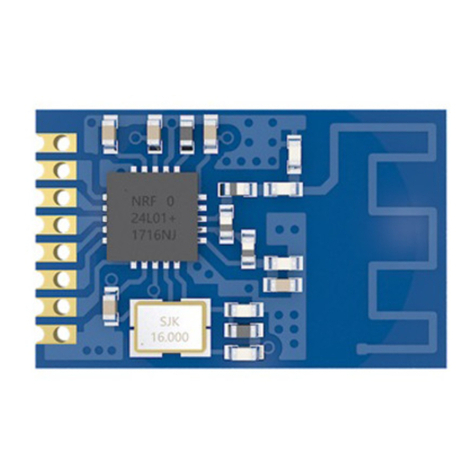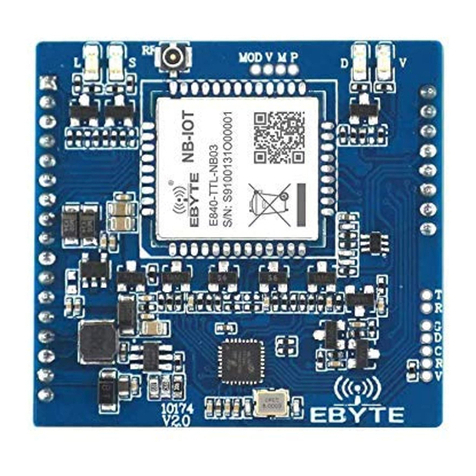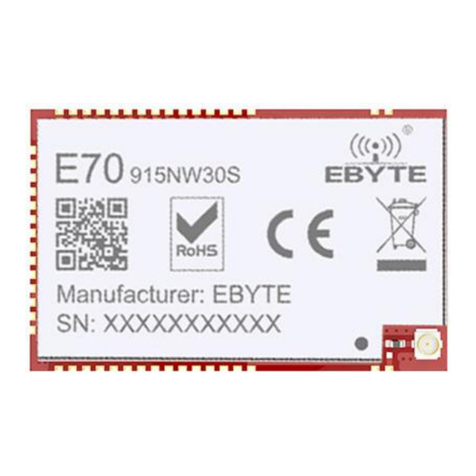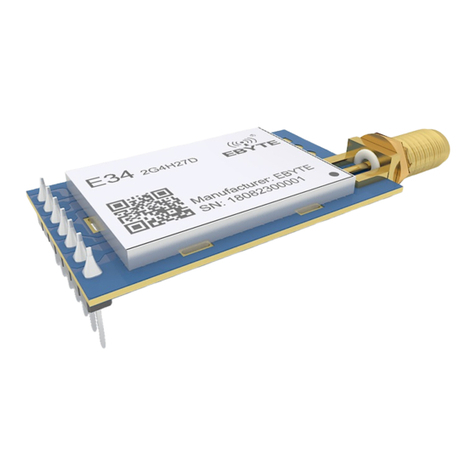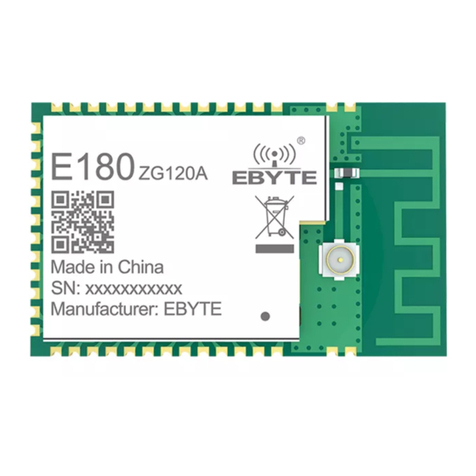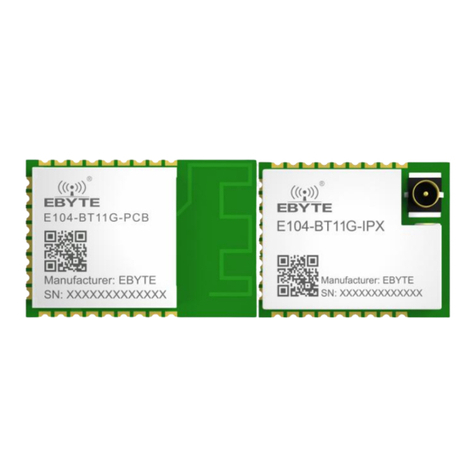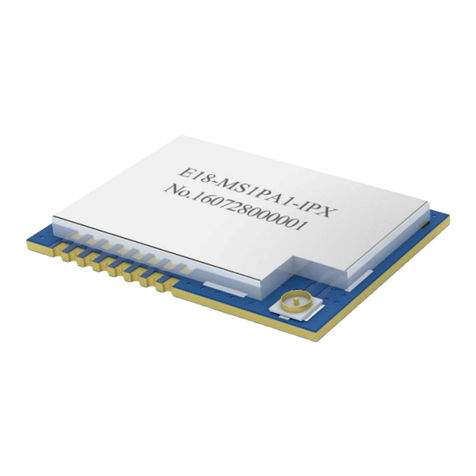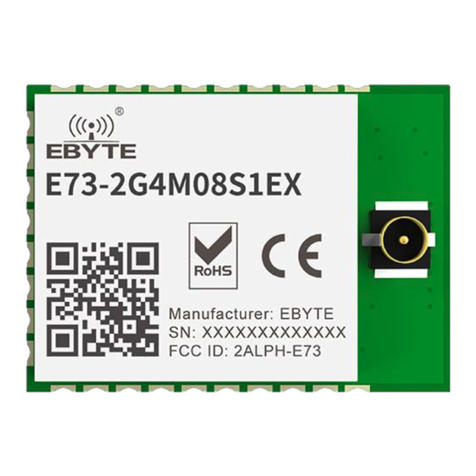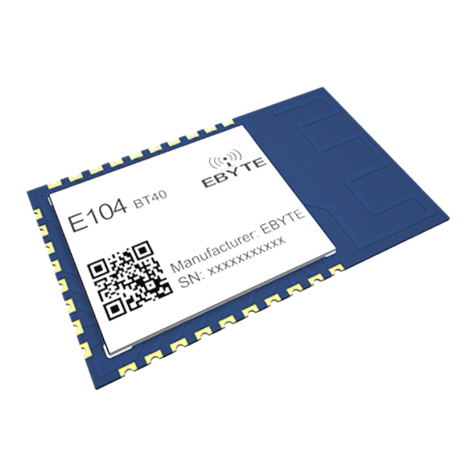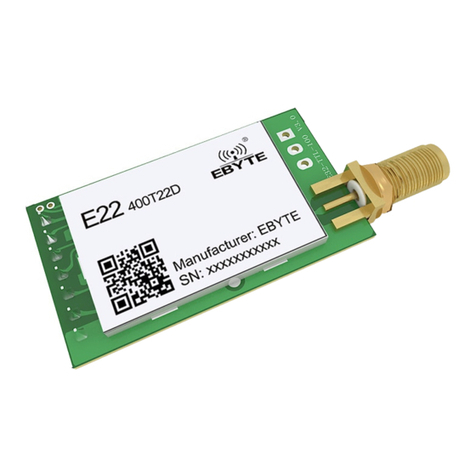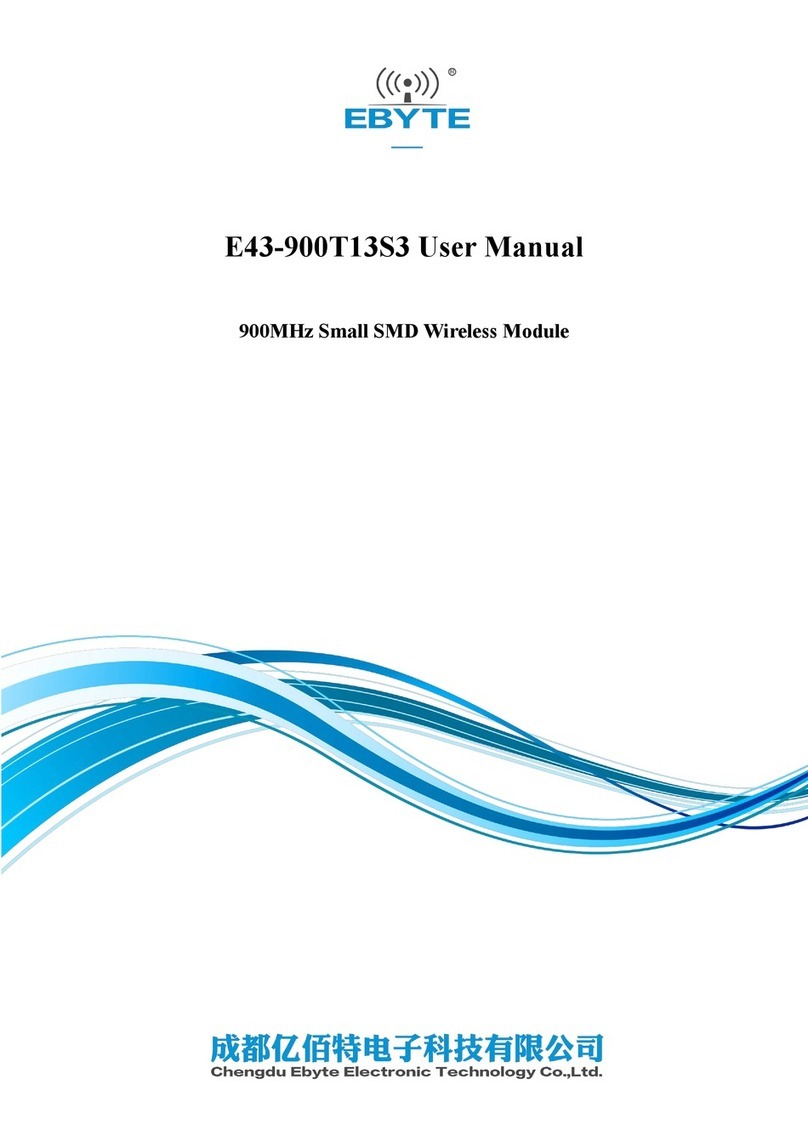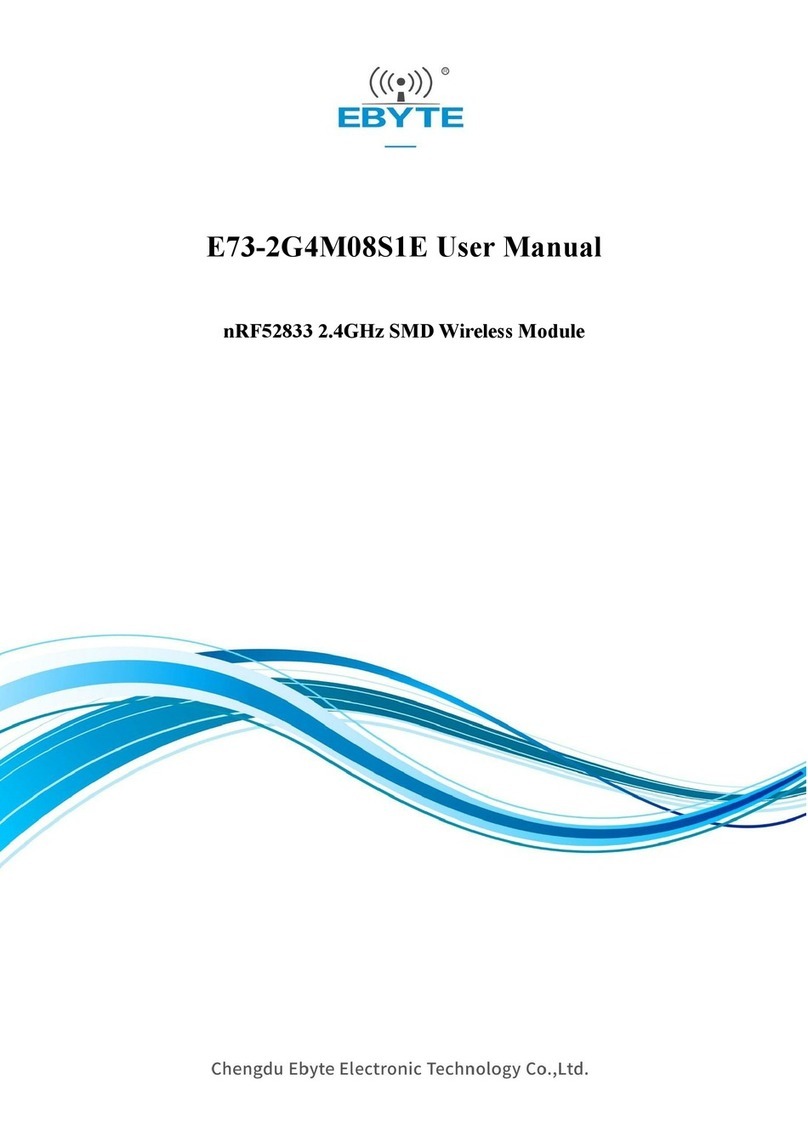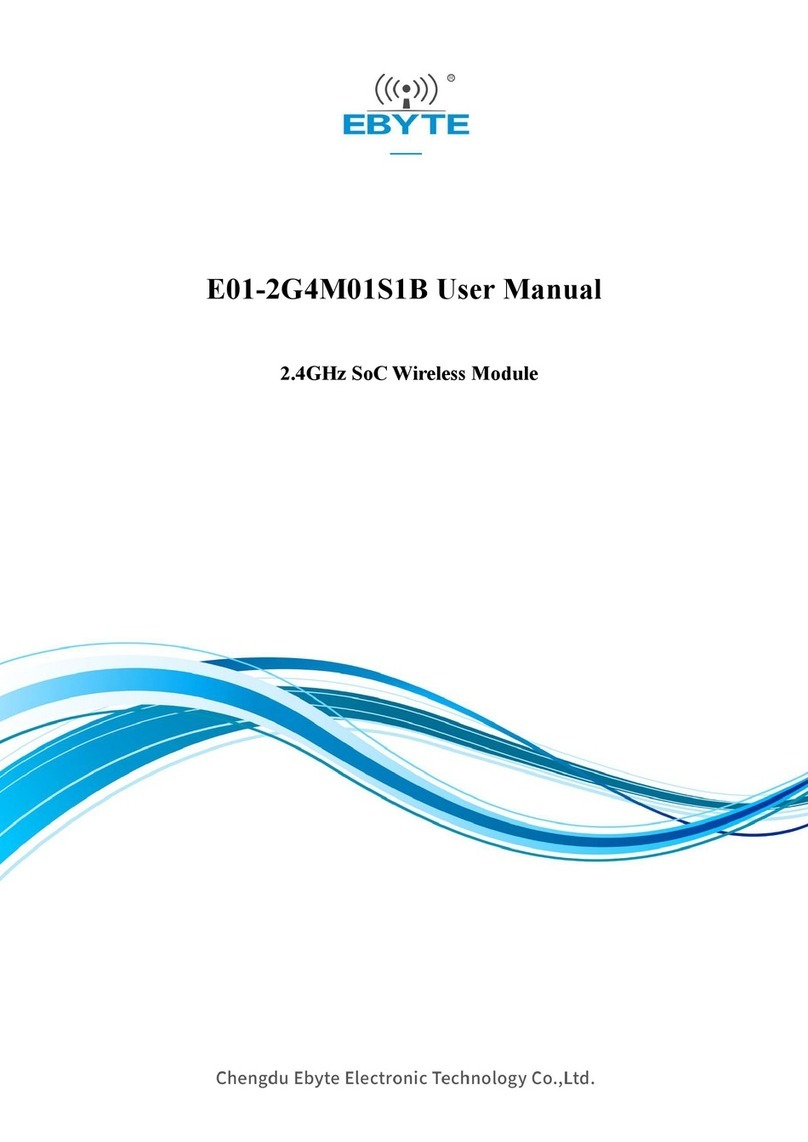
Chengdu Ebyte Electronic Technology Co.,Ltd. E220-400M22S User Manual
Copyright ©2012–2021,Chengdu Ebyte Electronic Technology Co.,Ltd.
Chip reset trigger input pin, low level effective
The module chip selection pin is used to start a SPI communication
Ground, connect to power reference ground
Ground, connect to power reference ground
For the pin definition, software driver and communication protocol of the module, please refer to the official llcc68 datasheet
of Semtech.
4 Basic operation
4.1 hardware design
It is recommended to use a DC stabilized power supply. The power supply ripple factor is as small as possible and
the module needs to be reliably grounded;
Please pay attention to the correct connection of the positive and negative poles of the power supply, such as reverse
connection may cause permanent damage to the module;
Please check the power supply to ensure that it is between the recommended supply voltage. If it exceeds the
maximum value, the module will be permanently damaged;
Please check the stability of the power supply. The voltage should not fluctuate greatly and frequently;
When designing the power supply circuit for the module, it is often recommended to keep more than 30% margin,
which is conducive to the long-term stable operation of the whole machine;
The module should be far away from the power supply, transformer, high frequency wiring and other parts with
large electromagnetic interference;
The high-frequency digital wiring, high-frequency analog wiring and power wiring must avoid the lower part of the
module. If it is necessary to pass through the lower part of the module, it is assumed that the module is welded on
the top layer, and the copper is laid on the top layer of the module contact part (all copper is laid and well grounded),
which must be close to the digital part of the module and laid on the bottom layer;
Assuming that the module is welded or placed in the top layer, it is also wrong to route at will in the bottom layer or
other layers, which will affect the spurious and receiving sensitivity of the module in different degrees;
Assuming that there are large electromagnetic interference devices around the module will greatly affect the
performance of the module, it is recommended to keep away from the module according to the intensity of
interference, and appropriate isolation and shielding can be done if the situation permits;
Assuming that there are lines (high-frequency digital, high-frequency analog and power lines) with large
electromagnetic interference around the module, the performance of the module will be greatly affected. According
to the intensity of interference, it is recommended to keep away from the module. If the situation permits,
appropriate isolation and shielding can be done;
If 5V level is used for communication line, 1k-5.1k resistor must be connected in series (not recommended, there is
still risk of damage);
Try to stay away from some TTL protocols with 2.4GHz physical layer, such as USB3.0;
